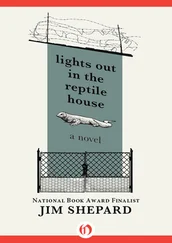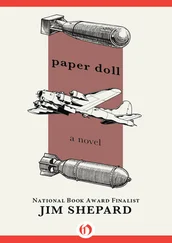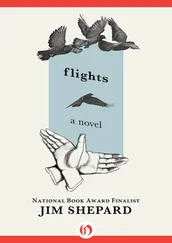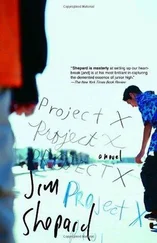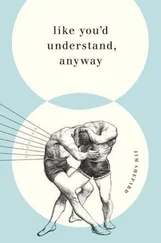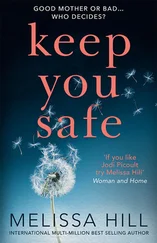This mountain is a widow maker in the summer, when the weather’s as good as it gets. It’s famous for the kind of ice and rock slides that in 1841 were big enough to dam the Indus, sitting at its feet. The first great mountaineer to set foot up here, the Englishman A. F. Mummery, along with his entire expedition, was never heard from again. Twenty-six climbers were killed before even the first summer summit was achieved. There have been twelve winter attempts since. None have succeeded.
There’s a song we sing in bars: “Who does winter mountaineering? We do winter mountaineering!” We are the Poles. The first winter attempt here was a joint Anglo/Polish expedition in 1988. Then the Brits came to their senses and dropped out. The Italians partnered with us for a little while as well, and have the casualties to prove it. Only the Poles have persevered.
And attempt number 13 is in deep trouble. For the last three days we’ve been hunkered down in an air raid of wind. Camp 4 amounts to a small trench for the tent, chopped into a cornice of snow as hard as concrete. We’re now in the seventh day, and we need to be back in Base Camp by the middle of the month, after which, as Kolesniak likes to put it, the winds really get going.
Kolesniak got started like the rest of us, as a schoolboy running around local crags and picking up whatever he could in terms of technique here and there. Afternoon larks turned into weekend excursions and then long holidays away from home. Now he’s so famous that kids can buy a snakes-and-ladders board game of his K2 climb. He’s one of the central figures in the golden decade of Polish Himalayan mountaineering, having summited ten 8,000-meter peaks, including Everest twice. Once everyone and his brother started climbing such peaks, he began proselytizing for what he called a true Alpine style, which involved refusing to benefit from the work of other teams, even if it meant ignoring ropes that lay fixed beside your route or declining to take shelter in unused tents. On Gasherbrum IV he forbade his team to follow a Japanese expedition’s footsteps in the deep snow. It was a short transition from that to winter mountaineering.
Soviet restrictions on travel throughout the postwar period ensured that Poles missed out on the first ascents of all the highest peaks, leaving us with mountains so small they lacked even year-round snow, but we solved the problem by resorting to the unthinkable: climbing in winter. In 1959 Zawada electrified everyone by ascending a staggering number of connected peaks in nineteen days of continuous climbing. Kolesniak, still a boy then, snuck into one of his lectures in a packed five-thousand-seat auditorium, and Zawada displayed a slide of a towering rock face in a sleet storm and told the audience, “Show me how you climb in this and I’ll tell you what you’re worth.”
It was Zawada who first conceived of attempting Everest in winter, once travel restrictions were lifted, and Zawada who led the expedition that succeeded. He lived to see Lhotse and Annapurna and Dhaulagiri fall as well. By then the world was calling us the Ice Warriors and the Pope was sending him climbing advice. Industries hired top climbers during the summers to paint their smokestacks: easy work that paid like state ministries.
And Nanga Parbat remained the reef on which all Polish shipping ran aground. In 1997 Pankiewiez and Trzymiel clawed to within three hundred meters of the top before their frostbite became so dire they could no longer press on. Duszkiewicz in 2008 reached through a blizzard what he thought was the summit only to find once back in Base Camp that he’d stopped to celebrate on a rise eighty meters lower.
And now here we are. For three years each of us has hoarded and sacrificed and trained for the right to earn this chance. We have flown five thousand kilometers and caravanned by truck and foot hundreds of kilometers more and ascended seven thousand meters in altitude and squandered tens of thousands of euros on permits and porters’ fees and equipment. “Let’s go, girls,” Kolesniak has shouted whenever anything has gone wrong. “You’re not going to grow the balls you need sitting around complaining.”
And as Agnieszka never tires of pointing out, we’re not the only ones who have sacrificed. Her father, on the occasion of our daughter’s seventh birthday, sat me down and walked us both glumly through the state of my finances, and once he finished her mother, waiting beside him, then asked how on earth, if I loved her daughter and granddaughter as much as I claimed, I could justify what I was doing. In the other room Agnieszka made a loud snorting sound.
I answered that I didn’t justify what I was doing. Nine expeditions in the course of a seven-year marriage meant that I’d been away more than at home. For five consecutive years I’d missed my daughter’s birthday. This birthday I’d been able to make because our climbing permits had fallen through.
And each time I returned with a body so devastated it never fully restored itself. Agnieszka told her girlfriends that she called my first weeks back the Famine Zombie Weeks. My vertebrae and hipbones were anatomy lessons. I was able to focus on emotional issues only when she put a hand on each side of my face and redirected my gaze into her eyes.
At our airport reunions, after her relief and joy, I’d see her anger at what I’d done to myself flood through her like a third revelation.
I’d met her at a faux-English pub in Warsaw. Most of us met our wives at one climbers’ drinking hole or another. But I’d had good timing: it turned out she’d just come from a co-worker’s retirement party at which she’d heard him joke about the number of years he’d worked at his bureau — more than she’d been alive — and then estimate the actual number of staff meetings he’d attended and evaluations he’d filed. A horrified silence had settled over the party, she said, and she’d decided then and there to quit. The pub had been the first one she’d encountered. When she asked what I did, I told her I climbed the highest mountains in the world in the winter. We went home together that same night.
She had some idea what she was getting herself into, she told me that first night while we spooned and she smoothed her hands together along my erection. Her brother had been a rock climber and mountaineer.
I’d failed to pursue the subject because she’d by then fitted me into her with a tenderness and calm I’d previously associated only with the afterlife. “Shhh,” she whispered at the force of my response. “Look.” And she brought her mouth around to mine. She meant, “Look how comprehensively we’ve merged.” She didn’t have to tell me: I was already so confounded that for an hour after she fell asleep I perched naked on her chest of drawers peering down at her like a traveler who’d found water on Mars.
As a child I’d been such an aberration in inwardness and appearance that my classmates had christened me the White Crow. My first years of schooling had been traumatic and I withdrew from any social situation in which I felt maligned. Climbing had been my way out. My aptitude for math and science had won me some recognition and I’d been invited to join the geology section of the Young Pioneers, and the field trips to the mountains had begun there. There I learned about rope and free climbing, about weather and snow conditions. But I still was valued only for what I could do: my mentor on those trips used to say that our relationship thrived on my achievements.
I’d been three hours late for our first dinner together and Agnieszka had already eaten and gone about her evening. She warmed up my portion after I arrived. “You aren’t angry?” I asked. “You’ve already eaten?”
“Why would I be angry?” she answered, looking up from her book. “And why wouldn’t I have eaten?”
Читать дальше

